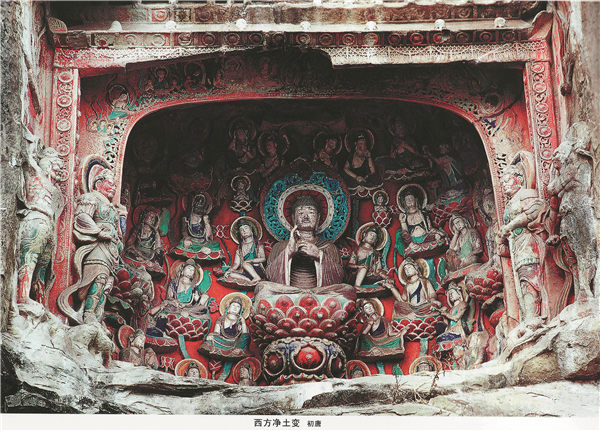Safeguarding the cultural landscape

The Nankan cliff statues in Bazhong, Sichuan province, from the Tang Dynasty (618-907). [Photo provided to China Daily]
Forum highlights remarkable progress in conserving cave temples, report Wang Ru in Dunhuang, Gansu province, and Ma Jingna in Lanzhou.
In mysterious caves or on steep cliffs, people can view marvelous Buddhist statues appearing to serenely survey all life, while delicate murals often portray Buddhist sutras. Together, they form cave temples — a special cultural landscape embodying the reverence of ancient people for divine blessings.
China boasts many dazzling cave temples, including the Mogao Caves in Dunhuang, Gansu province; Dazu Rock Carvings in Chongqing; the Longmen Grottoes in Henan province; and the Yungang Grottoes in Shanxi province — all UNESCO World Heritage Sites.
Through more than seven decades of efforts, the major risks of China's important cave temples have been eradicated, says Guan Qiang, deputy director of the National Cultural Heritage Administration at the 2024 International Forum on Cave Temple Conservation.
"We have achieved remarkable progress in exploring the protection and restoration of cave temples, consolidation of supporting mountains, management of the surrounding environment, digital preservation and monitoring. … Our ability to protect cave temples has significantly improved," he adds.
-
As AI encounters Dunhuang's art, the ancient caisson ceiling bridges centuries to the present.
View all stories

 Gansu thrives from green development
Gansu thrives from green development  >
>